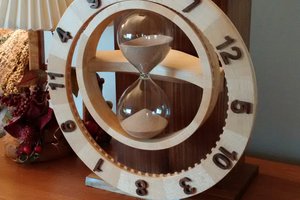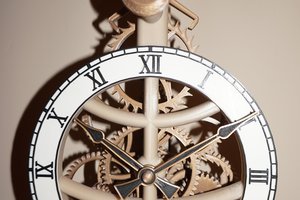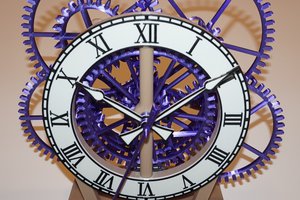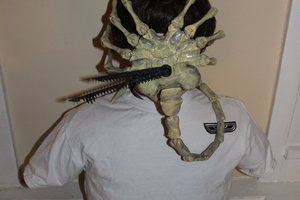# Shaftless mechanical clock
As a finger exercise to learn FreeCAD, I took on the challenge of designing a shaftless clock. Initially, I wanted to use only internal/inside gears with a small gear on a plate in the middle, cascading downward.
The drive couldn't be a motor because it has a shaft ;).
A prototype with a kind of wankel-wobble drive caused the string of hanging wheels to swing. As a solution, I came up with a single-layer planet gear system (which is actually a kind of ball bearing).
But in my search, a so-called Split Ring planet gear seemed much nicer. With this, arbitrary reduction can be created, including seconds-minutes-hours. I also came across a version where the output sun wheel of the first stage (60 minutes to hour) is the input annulus for a coaxial, nested second stage (24 hours to day).
Ultimately, the outer ring should be driven by an electromagnetically driven mechanism (todo). Currently, I'm assuming a pendulum of about 30 cm (swing time: 1 second).
As for building material, cardboard turned out to be too flimsy. Another dirt-cheap and infinitely available material turned out to be old vinyl records/LPs. (In FreeCAD, I could easily scale to that because everything is parametrically dimensioned.) For the teeth, I used a wave shaped swing, because you can easily drill and jigsaw them by hand in a large circle. For this, I set up a system under the drill press, allowing me to rotate the LP around its axis to drill the holes at exactly the same distance. The major drawback is that LPs are often very thin (<=1 mm), and often thicker in the middle and at the edges. Eventually, 2mm plexiglass turned out to be cheap; I kept the dimensions LP-based.
But because cutting/drilling it myself takes a lot of time, a fablab would be much easier.


 Steve
Steve

 Keith Elliott
Keith Elliott